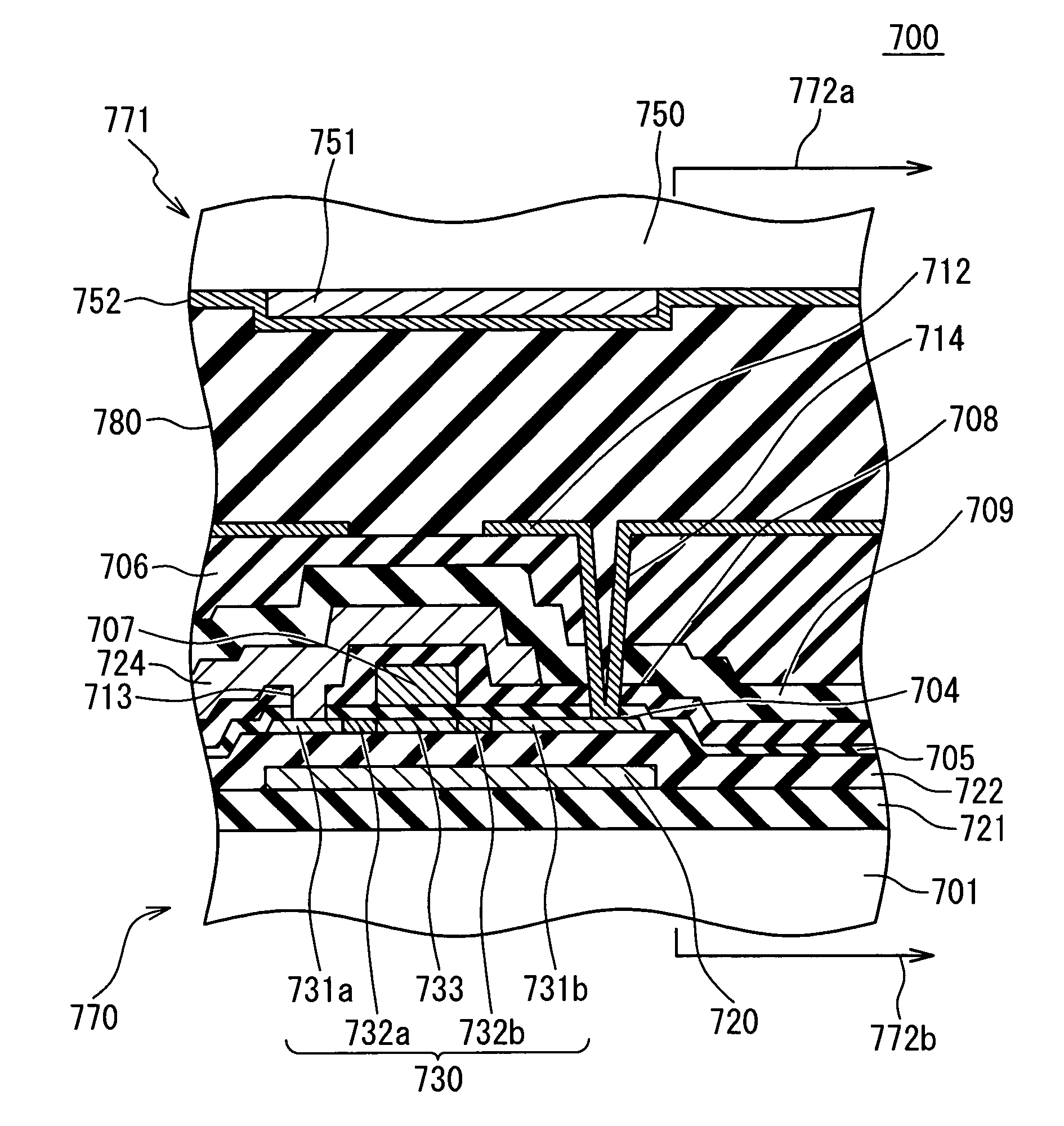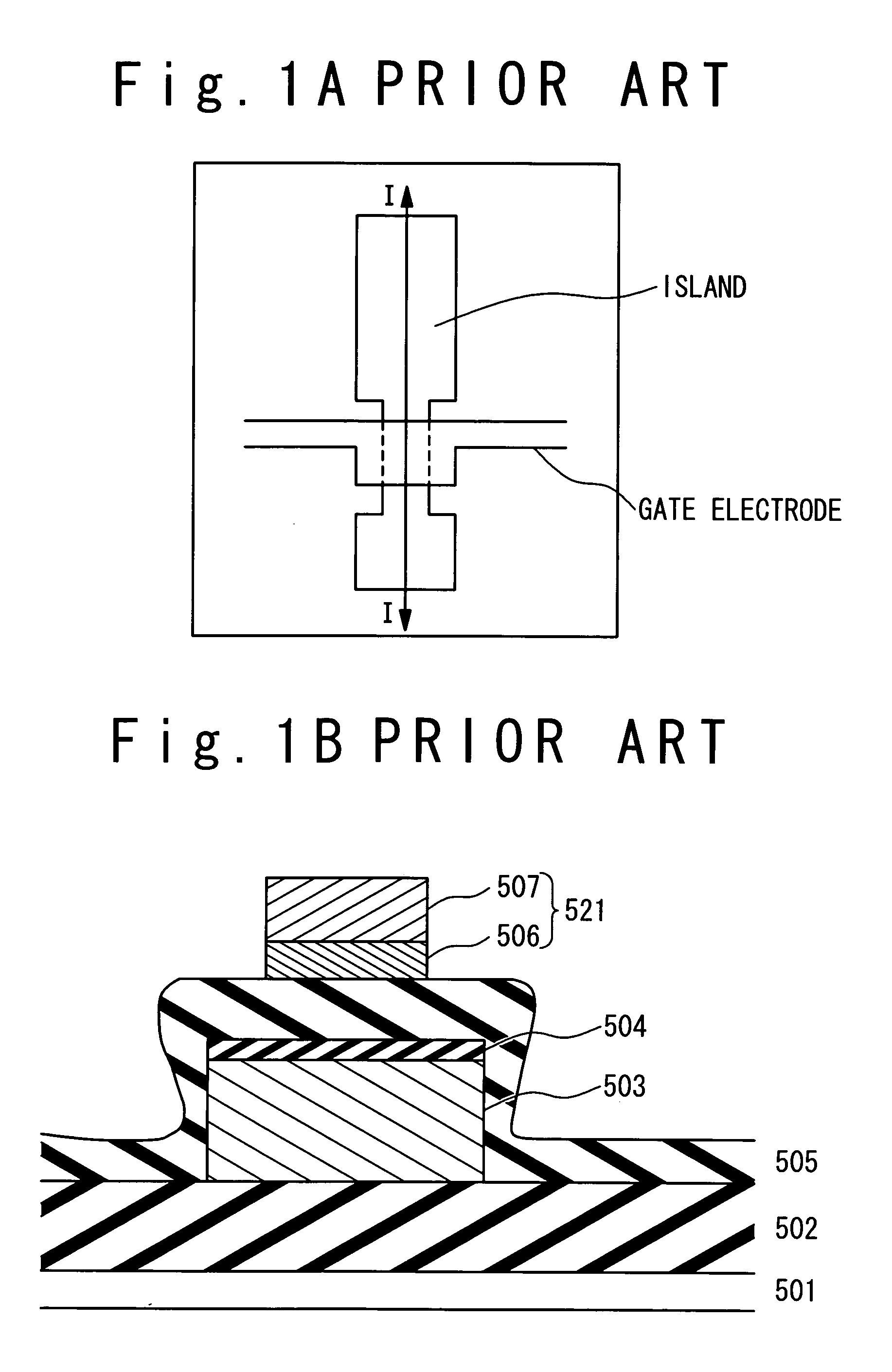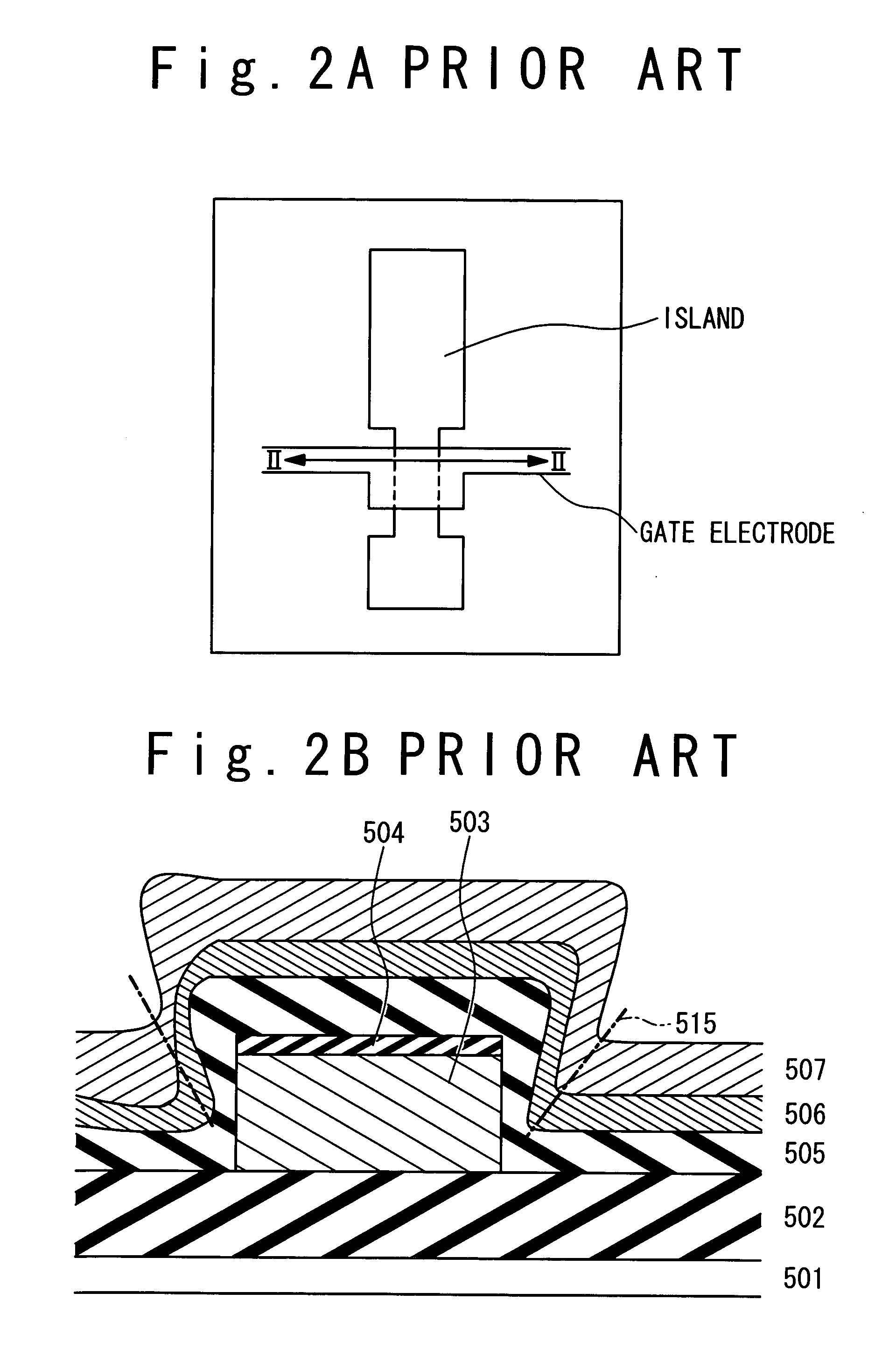Method for forming pattern of stacked film and thin film transistor
a technology of stacked film and thin film, which is applied in the direction of basic electric elements, electrical appliances, semiconductor devices, etc., can solve the problems of difficult control of the dimension of the polysilicon film and the switch off of the tft, the three-layer film does not cover the sidewall step portion of the two-layer structure, and the etching of the lower oxide film
- Summary
- Abstract
- Description
- Claims
- Application Information
AI Technical Summary
Benefits of technology
Problems solved by technology
Method used
Image
Examples
first embodiment
[0061] A first embodiment of a method for forming a pattern of a stacked film and a thin film transistor according to the present invention will be described below with reference to the attached drawings.
[0062]FIG. 4 is a cross-sectional view showing a configuration of a thin film transistor of the embodiments. The thin film transistor is provided on a glass substrate 101. The thin film transistor includes a lower oxide film 102, a polysilicon film 103, an upper oxide film 104, a gate oxide film 105, a micro-crystalline silicon (μc-Si) film 106, Cr film 107, a first interlayer oxide film 109, a second interlayer oxide film 112, contacts 113 and aluminum wirings 114.
[0063] The lower oxide film 102 is formed in a thickness of approximately 300 nm on the glass substrate 101. The polysilicon film 103 and the upper oxide film 104, which configure a two-layer structure, are provided in thicknesses of 60 nm and 10 nm, respectively, on the lower oxide film 102. Here, the polysilicon film ...
second embodiment
[0103] Next, a second embodiment of the method for forming a pattern of a stacked film of the present invention will be described. In the second embodiment, the etching time for the reactive ion etching by the gas containing CF4 and O2 when forming the two-layer structure is shortened.
[0104]FIG. 10 is a graph showing RF power dependencies of etching rates, for respective films, of etching gases for use in the second embodiment. Similarly to the first embodiment, the upper oxide film and the polysilicon film undergo the reactive ion etching by the gas series of CF4 and O2 by use of the photoresist as an etching mask until the lower oxide film is exposed. In this case, in the second embodiment, the etching conditions are set as: [0105] Gas flow amount ratio of CF4 and O2:1:1; [0106] Total gas flow amount: 200 sccm; [0107] Gas pressure: 20 Pa; and [0108] RF power: 300 W and 500 W
When the RF power is increased from 300 W to 500 W, though the etching rate for the polysilicon film is a...
third embodiment
[0111] The third embodiment in the method for forming the pattern of the stacked film and the thin film transistor of the present invention will be described below.
[0112] At first, the configuration of the third embodiment of the method for forming the pattern of the stacked film and the thin film transistor in the present invention is explained. FIG. 11 is a cross-sectional view showing the configuration of a liquid crystal light valve to which the third embodiment of the present invention are applied. The liquid crystal light valve 700 includes a TFT array substrate 770, an opposite substrate 771 and a liquid crystal 780.
[0113] The TFT array substrate 770 has a plurality of thin film transistors arrayed like a matrix and a plurality of pixel electrodes that are turned on and off by the thin film transistors. The opposite substrate 771 has the common opposite electrode opposite to the plurality of pixel electrodes of the TFT array substrate 770. The liquid crystal 780 is put and ...
PUM
 Login to View More
Login to View More Abstract
Description
Claims
Application Information
 Login to View More
Login to View More - R&D
- Intellectual Property
- Life Sciences
- Materials
- Tech Scout
- Unparalleled Data Quality
- Higher Quality Content
- 60% Fewer Hallucinations
Browse by: Latest US Patents, China's latest patents, Technical Efficacy Thesaurus, Application Domain, Technology Topic, Popular Technical Reports.
© 2025 PatSnap. All rights reserved.Legal|Privacy policy|Modern Slavery Act Transparency Statement|Sitemap|About US| Contact US: help@patsnap.com



